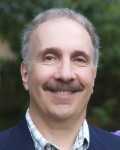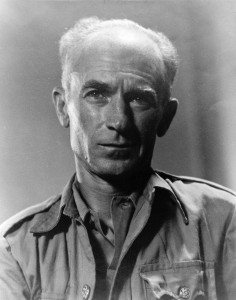President’s Message
By Jerry Zezima
President
National Society of Newspaper Columnists

Jerry Zezima
“You had the ability,” a U.S. Marine sergeant once told Pvt. Art Buchwald, “to screw up a two-car funeral. Anything you touched ceased to function.”
No, Ernie Pyle wasn’t the only newspaper columnist to serve in World War II.
Buchwald, whose drill instructor, Cpl. Pete Bonardi, told him years afterward, “I was sure you’d get killed,” wasn’t quite in Pyle’s league in military matters, but he managed to survive the war. He went to Paris in 1948 on the G.I. Bill and, a year later, started his nearly 60-year career as one of journalism’s greatest humorists.
Both fittingly and improbably, Buchwald won the Ernie Pyle Lifetime Achievement Award in 2006, the year before his death. He was one of several columnists who served in World War II to win the NSNC’s most prestigious honor.
Andy Rooney (2003) wrote for Stars and Stripes in London during the war. In 1943, he was one of six correspondents who flew on the second American bombing raid over Germany. He was the first journalist to reach the Ludendorff Bridge after the 9th Armored Division captured it on March 7, 1945. Rooney was decorated with the Bronze Star Medal and the Air Medal. Most famous for his wry “60 Minutes” commentaries, Rooney also wrote a syndicated humor column for many years. He died in 2011.
Chuck Stone (2002) served in the U.S. Army Air Forces and was a member of the famed Tuskegee Airmen, the group of black pilots who formed the 332nd Fighter Group and the 477th Bombardment Group. Stone, a Philadelphia Daily News columnist from 1972 to 1991, was twice nominated for the Pulitzer Prize and received the Congressional Gold Medal in recognition of his service in World War II. He also was the first president of the National Association of Black Journalists. Stone died in 2014.
Art Hoppe (1996) wrote a column of political and social humor for the San Francisco Chronicle for more than 40 years. According his obituary in the Chronicle, Hoppe served as a pharmacist’s mate aboard a destroyer in the Pacific during World War II. He was fond of telling his wide-eyed children and grandchildren that, in the line of duty, he “single-handedly dispatched millions of our country’s enemies” — by dispensing antibiotics to kill the germs in a sailor’s sore throat. Hoppe died in 2000.
Herb Caen (1993) was another legendary San Francisco Chronicle journalist whose wildly popular column — which featured local goings-on, insider gossip, social and political happenings, painful puns and offbeat anecdotes — ran for almost 60 years. Caen, who served for four years in the U.S. Army Air Forces in World War II, was awarded a special Pulitzer Prize in 1996. He died in 1997.

Photo courtesy Ernie Pyle Legacy Foundation
A pretty fair representation of columnists from the Greatest Generation, to be sure. But the greatest of the Greatest was, of course, Ernie Pyle, the former travel columnist who bravely reported from the front lines during World War II and was killed in action on April 18, 1945.
Twenty years ago, two columnists far too young to have served in the Good War but who have had sterling careers themselves, Dave Lieber and Bill Tammeus, created National Columnists Day to mark the 50th anniversary of Pyle’s death.
This year, to mark the 70th anniversary, the NSNC will honor the man and his legacy at our conference in Indianapolis.
The Ernie Pyle Lifetime Achievement Award will be presented to Judith Martin, aka Miss Manners. She didn’t serve in World War II because she was a toddler when the United States got involved, but if she had been a Marine, she doubtless would have shown Art Buchwald the proper way to conduct a two-car funeral.
Jerry Zezima writes a syndicated humor column for his hometown paper, The Stamford (Conn.) Advocate.

